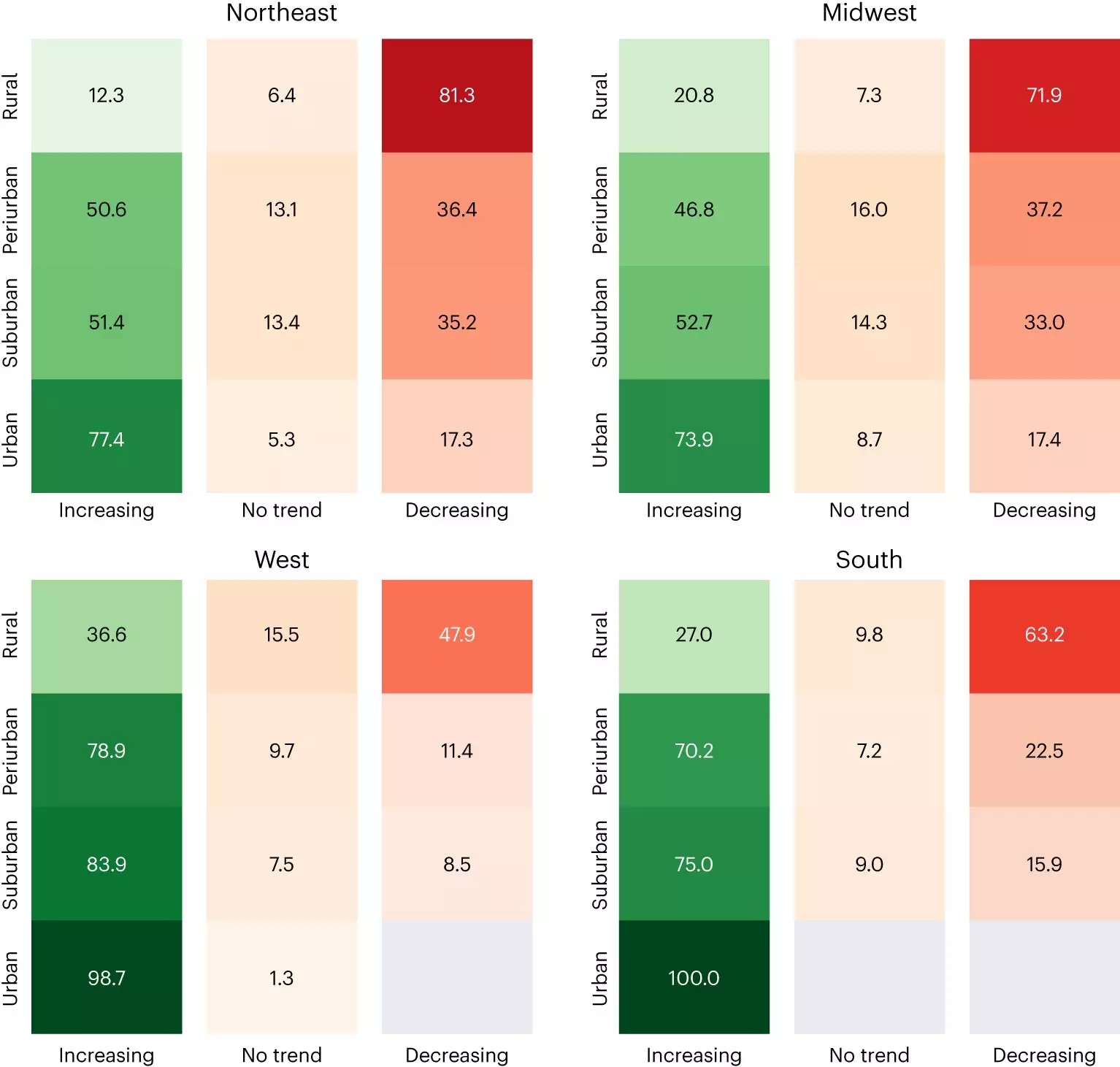The future of U.S. city population growth or decline has become a subject of great interest, especially in the wake of climate change. A team of environmental engineers at the University of Illinois Chicago has delved into this intriguing realm by employing census data and demographic surveys to assess the likely scenarios leading up to 2100. In their ground-breaking research published in the journal Nature Cities, Uttara Sutradhar, Lauryn Spearing, and Sybil Derrible present their methodological approach and highlight the potential implications of climate change on city populations.
Predicting population changes in cities is an intricate endeavor due to an abundance of variables that influence growth, stagnation, or even depopulation. Apart from climatic concerns, factors such as immigration, tax rates, home prices, birth rates, job availability, and the political climate significantly impact people’s decisions to stay or leave. Recognizing the multifaceted nature of this challenge, the researchers analyze recent and ongoing population trends to formulate their projections.
To make their estimations, the team analyzes longitudinal data from the U.S. census between 2000 and 2020, leveraging consistent and reliable information for 24,295 cities across the country. Additionally, they utilize two datasets from the Census Bureau’s 2020 TIGER/Line Shapefiles for extrapolation purposes, covering 31,568 U.S. cities. To further contextualize their projections, the researchers compare their findings with climate change estimates under multiple scenarios.
The study forecasts substantial population decline in approximately half of U.S. cities within the next 70 years, surpassing the 43% decline witnessed in 2020. Notably, the Midwest and Northeast regions are projected to experience the most significant decreases, highlighting the potential consequences of climate change on urban populations. However, it is crucial to note that major metropolises like New York and Chicago are expected to remain relatively resilient to population decline.
Despite the bleak outlook for numerous cities, the researchers indicate a contrasting narrative for cities situated in the southern and western regions. These regions, particularly those already experiencing established growth patterns, such as Phoenix and Houston, are predicted to witness further population growth. Such cities’ success can be attributed to factors like favorable climate, economic opportunities, and burgeoning infrastructure, presenting an enticing prospect for individuals and families seeking relocation options.
Research endeavors like the one conducted by Sutradhar, Spearing, and Derrible are of paramount importance to city planners, who rely on long-term strategic planning. Rapid population growth strains services in cities, necessitating infrastructure development, while the sudden decline in population poses challenges in providing adequate services with a dwindling tax base. By identifying these potential scenarios, city planners can proactively formulate comprehensive strategies to address the diverse needs of cities in different circumstances.
As the impact of climate change becomes increasingly evident, cities must adopt measures that promote sustainable development. Incorporating climate change considerations into urban planning frameworks can mitigate the risks associated with population decline and facilitate equitable growth. By fostering resilient infrastructure, investing in renewable energy, and implementing adaptive policies, cities can create a better future for their residents.
The study conducted by the University of Illinois Chicago’s trio of environmental engineers sheds light on the implications of climate change on U.S. city populations. Through an analysis of census data and demographic surveys, the researchers provide valuable insights into future population trends. While certain regions face the prospect of population decline, others have the potential for continued growth. The findings underline the need for city planners to anticipate and adapt to these scenarios through sustainable development practices, ensuring the well-being of their communities for generations to come.


Leave a Reply